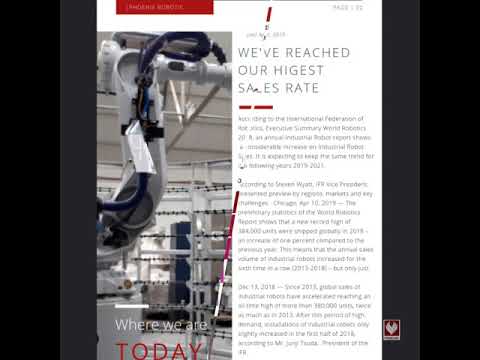Industrial robots have become a hot topic in recent years, revolutionizing the manufacturing industry with their efficiency and precision. In a recent YouTube video titled “What the experts are saying about Industrial Robots,” experts across various fields share their insights and opinions on this groundbreaking technology. In this article, we will explore the preliminary statistics from the World Robotics Report, types of industrial robots, and the latest news about industrial robot automation in 2019.
According to the World Robotics Report, the number of new installations of industrial robots worldwide reached a staggering 422,000 units in 2018. This represents a record-breaking growth of 6% compared to the previous year. These statistics highlight the increasing reliance on industrial robots in various industries, including automotive manufacturing, electronics, and food and beverage.
Now, let’s delve into the different types of industrial robots. There are several categories based on the tasks they perform, such as:
1. Articulated Robots: These robots have rotary joints, allowing them to mimic the movements of a human arm. They are highly flexible and can perform complex tasks with precision. Articulated robots are commonly used in assembly lines, welding, and painting applications.
2. SCARA Robots: SCARA stands for Selective Compliance Articulated Robot Arm. This type of robot is designed for tasks that require high-speed and accurate horizontal movement. SCARA robots are widely used in industries like electronics for tasks such as assembling components and testing products.
3. Cartesian Robots: Also known as Gantry robots, Cartesian robots operate on a three-axis system (X, Y, and Z). They are ideal for repetitive tasks that require high payloads or large workspace coverage. Cartesian robots find application in industries like packaging, material handling, and machining.
4. Delta Robots: Delta robots are characterized by their unique design using parallelograms. They are renowned for their incredible speed and precision, making them suitable for pick-and-place operations in industries like food processing and pharmaceuticals.
5. Collaborative Robots (Cobots): These robots are designed to work alongside humans, collaborating with them rather than replacing them. Cobots are equipped with sensors to ensure the safety of human workers. They are becoming increasingly popular in industries where humans and robots need to work together, such as small-scale manufacturing and healthcare.
Now that we have explored the types of industrial robots, let’s turn our attention to the latest news about industrial robot automation in 2019. One notable development is the integration of artificial intelligence (AI) with industrial robots. AI allows robots to learn and adapt to new situations, improving their efficiency and problem-solving capabilities. This integration has opened up new possibilities in industries such as logistics, where robots can autonomously navigate through warehouses and fulfill orders.
Another significant advancement is the use of robots in hazardous environments. Whether it’s handling toxic materials or working in extreme temperatures, robots are proving to be invaluable assets in ensuring the safety of human workers. Moreover, they can perform tasks with a level of precision that humans find challenging to achieve.
In terms of market trends, the industrial robot market is expected to witness steady growth in the coming years. The demand for automation and increased productivity continues to drive the adoption of industrial robots across industries. As the technology becomes more accessible and affordable, even small and medium-sized businesses can benefit from integrating robots into their operations.
In conclusion, the experts in the YouTube video shed light on various aspects of industrial robots, from the preliminary statistics to the types of robots and the latest news about industrial robot automation in 2019. The increasing installations of industrial robots worldwide reflect the significant role they play in enhancing efficiency and productivity across different industries. As advancements continue to propel industrial robotics forward, we can expect to see even more groundbreaking developments in the near future.
References:
– Types of Industrial Robots. (n.d.). Retrieved from [Link Removed]
– Latest News about Industrial Robot Automation 2019. (n.d.). Retrieved from [Link Removed]
Industrial Robot
“Revolutionizing Manufacturing: A Look into Industrial Robot Automation and the Different Types of Robots”


